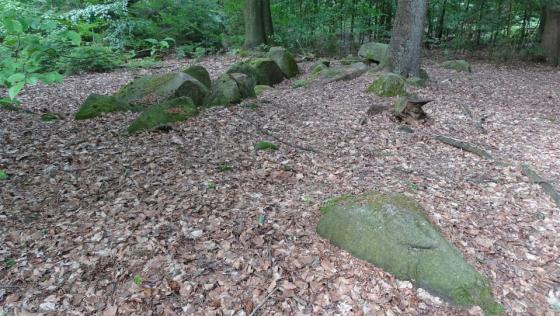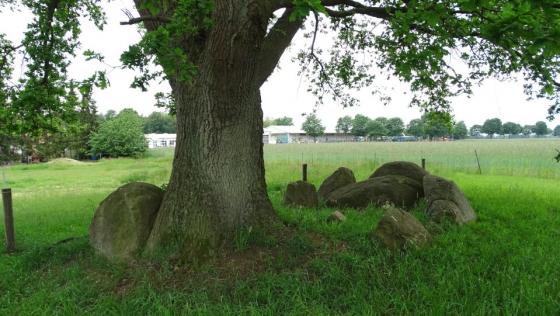taken from the on-site information board:
Restored megalithic tomb
The oldest structure of this prehistoric burial ground is this stone grave. According to a report from 1841, the then already damaged burial chamber was called “Steinhaus” or “Hünenkeller”, around 1871 it was romantically called “Fürstenruft”.
Like all similar sites, the stone monument was used as a family crypt around 2500 before Christ birth.
All the gaps between the large boulders were wedged with rubble and leaked from the outside with clay. The whole burial chamber was hidden under a mound of earth. Neolithic burial objects have not survived here.
In the archaeological investigation in 1978, a capstone and 5 apart, partially damaged supporting stones were still present.
A capstone was already removed in 1920 and used as a war memorial.
The district of Rotenburg restored the site according to the excavation findings and the example of other stone tombs. The remaining stones were brought together in a new arrangement.







